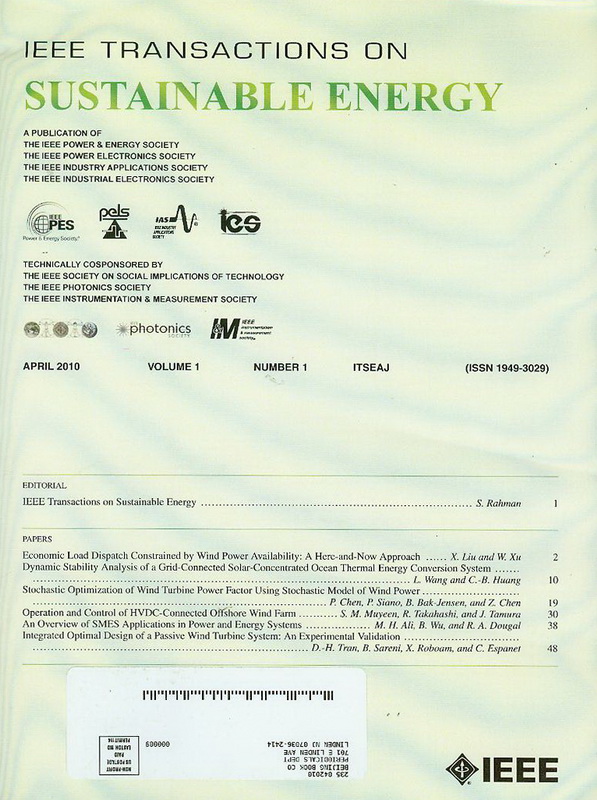State Transfer Induced Transient Synchronization Instability of GFM-VSC: Analysis and Improvement
IF 10
1区 工程技术
Q1 ENERGY & FUELS
引用次数: 0
Abstract
The operation mode of grid-forming voltage source converters (GFM-VSCs) may switch between voltage source mode (VSM) and current source mode (CSM) under some situations such as grid faults, owing to the current limitation control. During the mode-switching process, there is state transfer from the final state of the last mode to the initial state of the next mode, which impacts the transient synchronization stability (TSS) of GFM-VSCs. This paper primarily focuses on analyzing and improving the TSS of GFM-VSCs by considering the effect of state transfer. A novel transient instability mechanism is revealed through the existence analysis of equilibrium points. It clarifies that the state transfer may cause the operating trajectory during faults to bypass the stable equilibrium point in CSM before diverging to the next cycle, thereby resulting in transient synchronization instability. Besides, to further analyze the TSS of mode-switched VSCs considering the dynamics during faults, multiple Lyapunov functions are adopted to derive the TSS criteria and boundaries. It has been identified that lowering the minimum critical current and adjusting the saturated current phase in accordance with virtual power angle (VPA) dynamics can enhance the TSS. Therefore, a VPA feedback-based current limiting strategy is proposed to safeguard GFM-VSCs against overcurrent and ensure the TSS. The validity of the new transient instability mechanism and the efficacy of the proposed strategy are confirmed through simulations of a GFM-VSC connected to an IEEE 39-bus power grid and hardware-in-the-loop experiments.ggm - vsc状态转移诱导的暂态同步失稳:分析与改进
由于限流控制,在电网故障等情况下,成网电压源变换器(GFM-VSCs)的工作模式会在电压源模式(VSM)和电流源模式(CSM)之间切换。在模式切换过程中,存在从上一模式的最终状态到下一模式的初始状态的状态转移,影响了ggm - vscs的暂态同步稳定性(TSS)。本文主要分析和改进ggm - vscs的TSS,并考虑状态转移的影响。通过平衡点的存在性分析,揭示了一种新的暂态失稳机理。阐明了状态转移可能导致故障期间运行轨迹绕过CSM的稳定平衡点,发散到下一个周期,从而导致暂态同步不稳定。此外,为了进一步分析考虑故障过程动力学的切换模式VSCs的TSS,采用多个Lyapunov函数推导了TSS准则和边界。降低最小临界电流和根据虚功率角(VPA)动态调整饱和电流相位可以提高TSS。因此,提出了一种基于VPA反馈的限流策略,以保护ggm - vsc不发生过流,并保证TSS。通过连接IEEE 39总线电网的GFM-VSC仿真和硬件在环实验,验证了新暂态失稳机制的有效性和所提策略的有效性。
本文章由计算机程序翻译,如有差异,请以英文原文为准。
求助全文
约1分钟内获得全文
求助全文
来源期刊

IEEE Transactions on Sustainable Energy
ENERGY & FUELS-ENGINEERING, ELECTRICAL & ELECTRONIC
CiteScore
21.40
自引率
5.70%
发文量
215
审稿时长
5 months
期刊介绍:
The IEEE Transactions on Sustainable Energy serves as a pivotal platform for sharing groundbreaking research findings on sustainable energy systems, with a focus on their seamless integration into power transmission and/or distribution grids. The journal showcases original research spanning the design, implementation, grid-integration, and control of sustainable energy technologies and systems. Additionally, the Transactions warmly welcomes manuscripts addressing the design, implementation, and evaluation of power systems influenced by sustainable energy systems and devices.
 求助内容:
求助内容: 应助结果提醒方式:
应助结果提醒方式:


